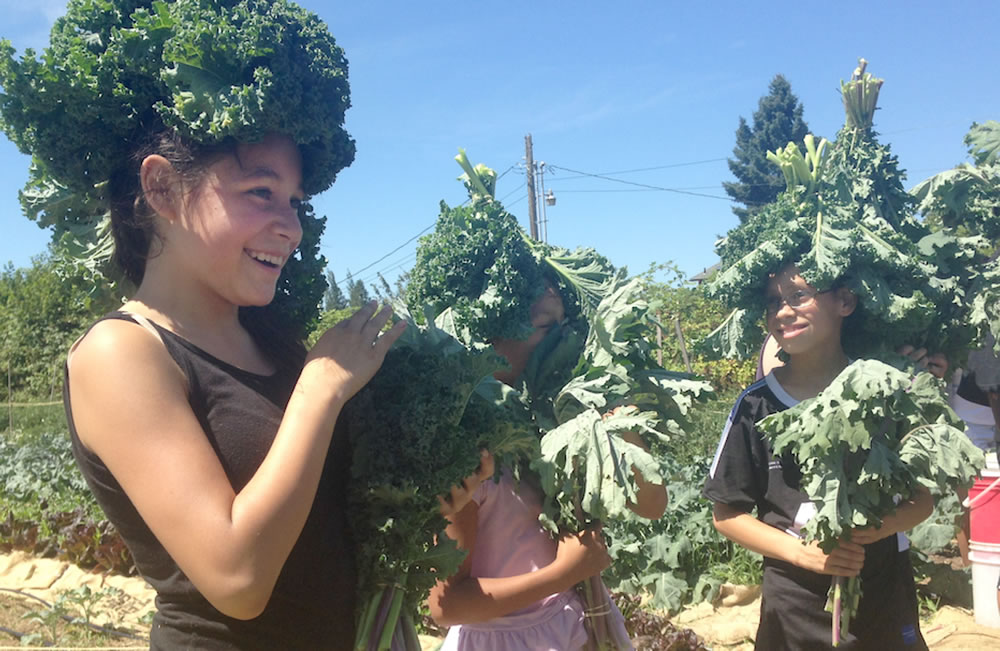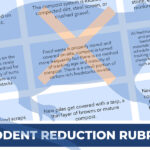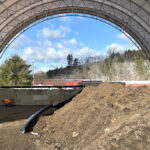Recently published journal article finds low risk of lead poisoning when growing food in urban soils. Using compost is a key tool in risk mitigation.
Nora Goldstein
BioCycle February 2016
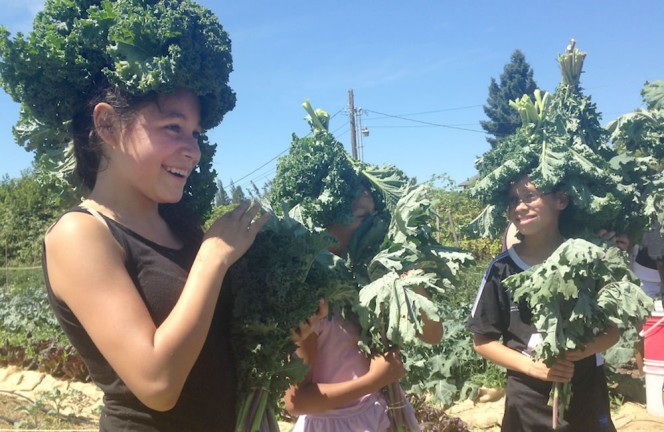
Researchers found that plants actually take up very little lead in their stems and leaves, and are safe to eat. Photo courtesy of Harvest Pierce County
Using compost is the single best tool to protect against any danger associated with lead in urban soils. By putting compost on top or tilling compost into the soil being used for the garden will both dilute total lead concentrations and may also make the lead that is there less hazardous. And using good compost guarantees there will be plenty of vegetables to harvest.
That’s the main finding of a paper, “Lead In Urban Soils: A Real or Perceived Concern for Urban Agriculture?”, that appeared in the December 11, 2015 issue of the Journal of Environmental Quality (JEQ). The University of Washington (UW)-led study looked at potential risks associated with growing vegetables in urban gardens and determined that the benefits of locally produced vegetables in cities outweigh any risks from gardening in contaminated soils. “People are terrified of soils in urban areas,” explains lead author Sally Brown, a UW research associate professor of environmental and forest sciences and BioCycle columnist. “They always think it’s a mystery brew of toxins in the soil, but in the vast majority of cases, the contamination is lead. We’ve shown that lead is harmful by eating the dirt, not from eating the lettuce grown in the dirt.”
Coauthors of the study are Rufus Chaney of the U.S. Department of Agriculture and Ganga Hettiarachchi of Kansas State University. Previous studies have found that lead (Pb) contamination and elevated levels in the bloodstream are more common in people who live in urban areas than in rural or suburban neighborhoods. Lead can be absorbed directly from breathing in or inadvertently consuming contaminated soil or dust. Alternatively, in the ongoing crisis in Flint, Michigan, residents ingested lead through their water.
The introduction to the JEQ article outlines the scope of the literature review: “This review summarizes some of the benefits that have been associated with urban agriculture. Information on the extent of Pb contamination in urban soils, uptake of Pb by garden vegetables, absorption of Pb into the blood through soil and plant ingestion, and the relative risks associated with these pathways are presented. Best management practices to limit exposure to Pb-contaminated soils in the context of urban agriculture are summarized. The review is not intended to suggest that elevated blood Pb in children in urban areas is not a concern; it is meant to provide information on whether growing food in urban soils has the potential to increase exposure to and hazards from elevated soil Pb and to provide guidance to minimize the Pb exposure potential.”
Urban Lead Sources
The soil around older homes and under roof drip lines is most likely to have higher concentrations of lead from paint and other building materials used on older structures. These areas unfortunately often double as playgrounds, backyards and vegetable gardens in cities across the country.
A common assumption is that soil contaminated with lead is unsafe for gardening, Brown notes. But with the exception of some root vegetables — carrots, turnips, radishes and beets — the researchers found that plants actually take up very little lead in their stems and leaves, and are safe to eat. The key is to carefully wash the excess dirt from leafy vegetables and also wash hands before eating.
With carrots and these other root vegetables, there doesn’t appear to be a proportional relationship between the amount of lead in the soil and how much gets taken up by the vegetable. But that doesn’t mean carrots should be avoided. “Lead is most hazardous when it enters an empty stomach, so the effects are minimal when eating these root vegetables because food is already in the stomach,” Brown explains. “If you have a kid eating a carrot, that is a better-nourished kid. Urban agriculture is just such a wonderful thing, and you shouldn’t let the fear of the soil put the kibosh on it.”
The researchers also recommend putting a layer of compost on top of lead-contaminated soil, which significantly dilutes the lead concentration, according to several previous studies. In some instances, compost will actually render the lead insoluble, meaning it’s unlikely to be absorbed into the bloodstream if eaten. Building a raised bed and using tested soil and compost from an outside source is another good option for urban gardening, add the researchers. “As cities continue to grow and more of the U.S. population than ever before is considered food insecure (as many as 93 million people), urban gardening is a viable option to address that growing need,” says Brown.
Journal Article Highlights
Passages from the JEQ article highlight findings from the research and data analysis. (Reference citations have been removed for this summary):
Direct And Indirect Exposure: “For direct and indirect exposure pathways, the hazards associated with elevated soil Pb depend on multiple factors. The relationship between total soil Pb and the portion that can be absorbed varies based on Pb mineral form, soil properties, and exposure pathway. Chronic Pb toxicity, the concern for urban children, involves multiple exposures over time.”
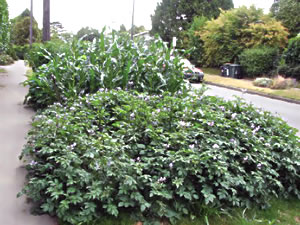
Researchers recommend putting a layer of compost on top of lead-contaminated soil, which signi cantly dilutes lead concentrations. Photo by Sally Brown
Direct Exposure: “Elevated Pb in urban soils already provides a basis for human exposure. For urban agriculture to increase the potential for Pb exposure, the act of growing and/or consuming food grown in urban soils has to result in added exposure to bioavailable Pb. In addition, the benefits associated with urban agriculture from a nutritional health and development perspective must be less than the additional hazards.”
Indirect Exposure To Lead—Plant Uptake: “Although certain contaminants (e.g., Cd) have a high potential to be absorbed by plants, plant absorption of Pb is relatively low, often showing no significant relationship to enriched soil Pb. Despite this, concerns about the perceived human health risk of gardening on urban soils due to possible or real crop contamination continue to hinder the revitalization of underutilized urban lots by deterring potential gardeners. Research has repeatedly shown that concentrations of Pb in vegetables harvested at urban sites are low.”
Availability Of Nutrients In Soil: “Availability of adequate amounts of nutrients in the soil improves plant growth and leads to higher biomass production. Higher biomass yield dilutes the absorbed potentially toxic elements in the plants. It has been found that increasing plant nutrients (N-P-K) in Pb-contaminated urban soil reduced Pb concentrations in lettuce.”
Thorough Washing: “A recent study showed high correlation with Pb in leaf tissue and elevated aluminum for plants grown in a Pb-contaminated soil as evidence of soil contamination. For example, low-growing leafy vegetables and herbs can become contaminated by adhering soil particles that become bound in the leaf waxy cuticle. In fact, research has shown that inadequate or lack of washing of plant materials can lead to overestimation of Pb accumulation in crops. This suggests that previous reports of Pb uptake by garden vegetables may be the result of soil contamination of samples, which can be estimated by analysis of soil elements that are weakly absorbed by plants (i.e., aluminum, titanium, or zirconium or yttrium). Washing crops before eating reduces the potential for transferring Pb in soil to humans. Traditional rinsing with water washes off most soil particles.”
BMPs To Reduce Potential Soil Lead Transfer: “The use of compost is one of the most common practices used by gardeners who grow food in urban soils. Research has shown that the immediate beneficial effect of amending soils with compost is to dilute overall soil contaminant concentrations significantly. Concerns have been raised regarding the long-term effectiveness of compost amendments because composts may decompose over time. However, most urban gardeners add compost to soils annually; over time, these additions help to significantly lower Pb concentration and phyto- and bio- availability in soils. Compost addition also increases plant biomass production, helping to further reduce food-chain transfer of contaminants via dilution of Pb concentration in plants. This is mainly through improving soil fertility parameters such as plant nutrient concentrations in soil, soil structure, and water-holding capacity. Compost amendments may also help to reduce bioaccessible Pb.”


